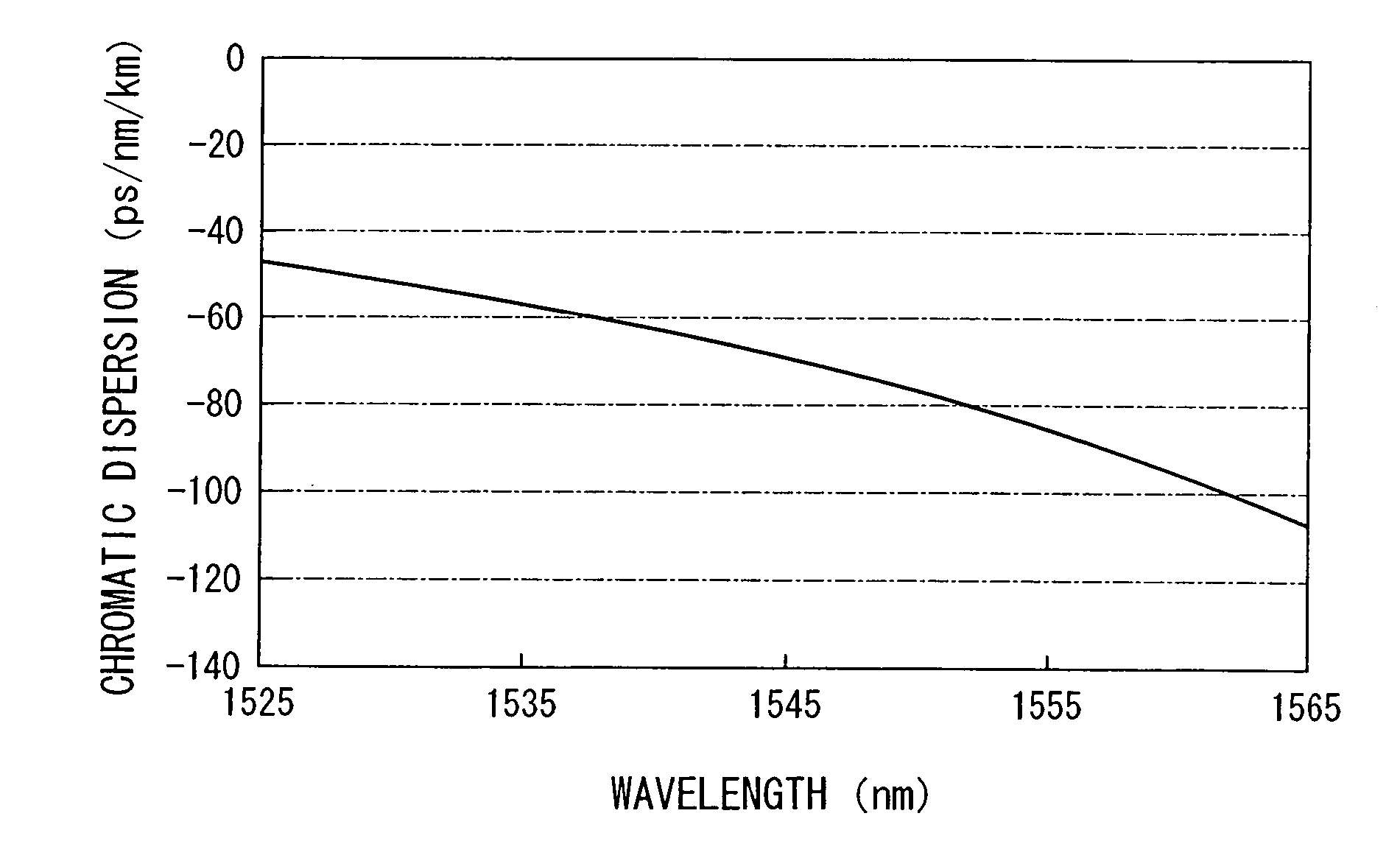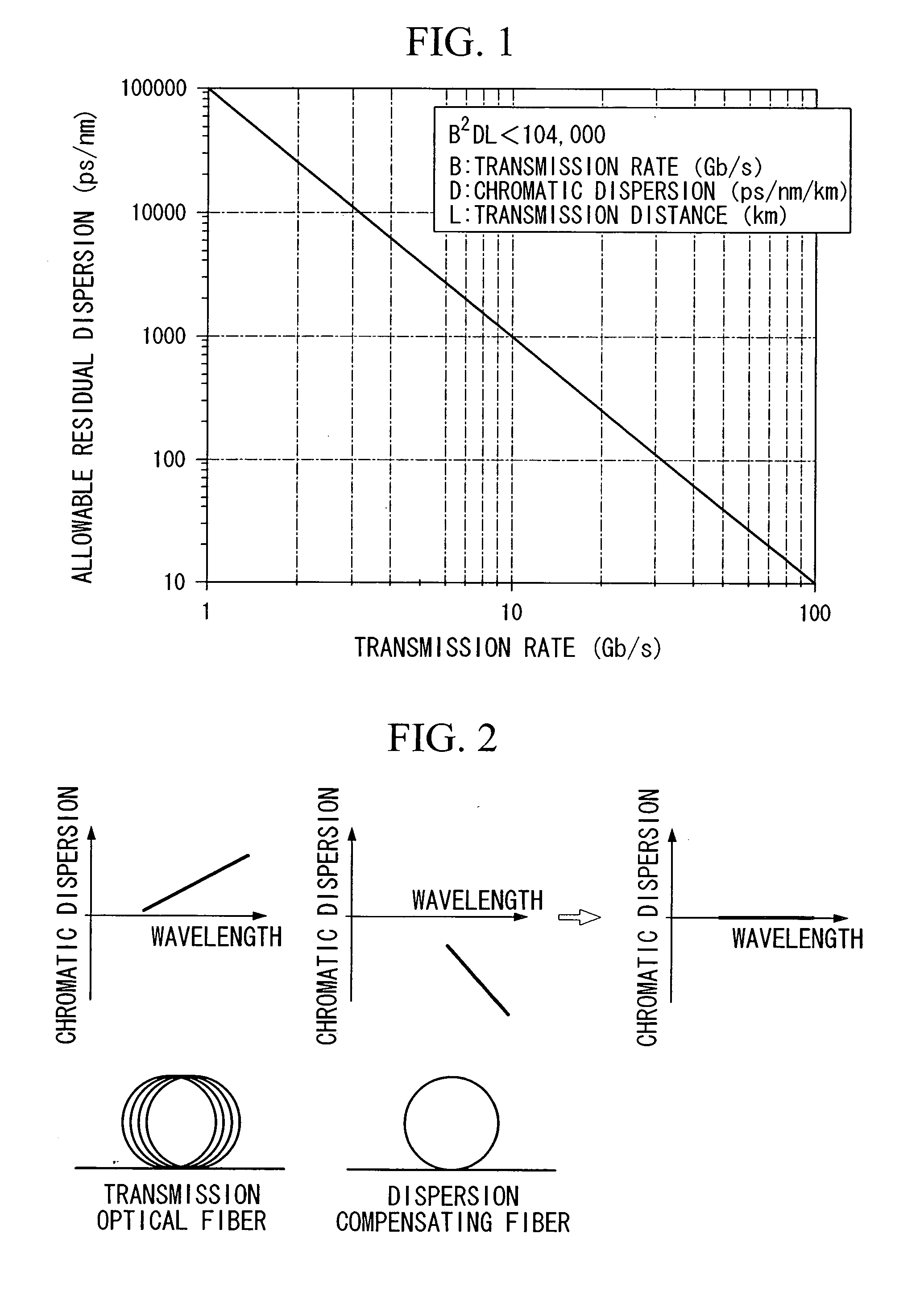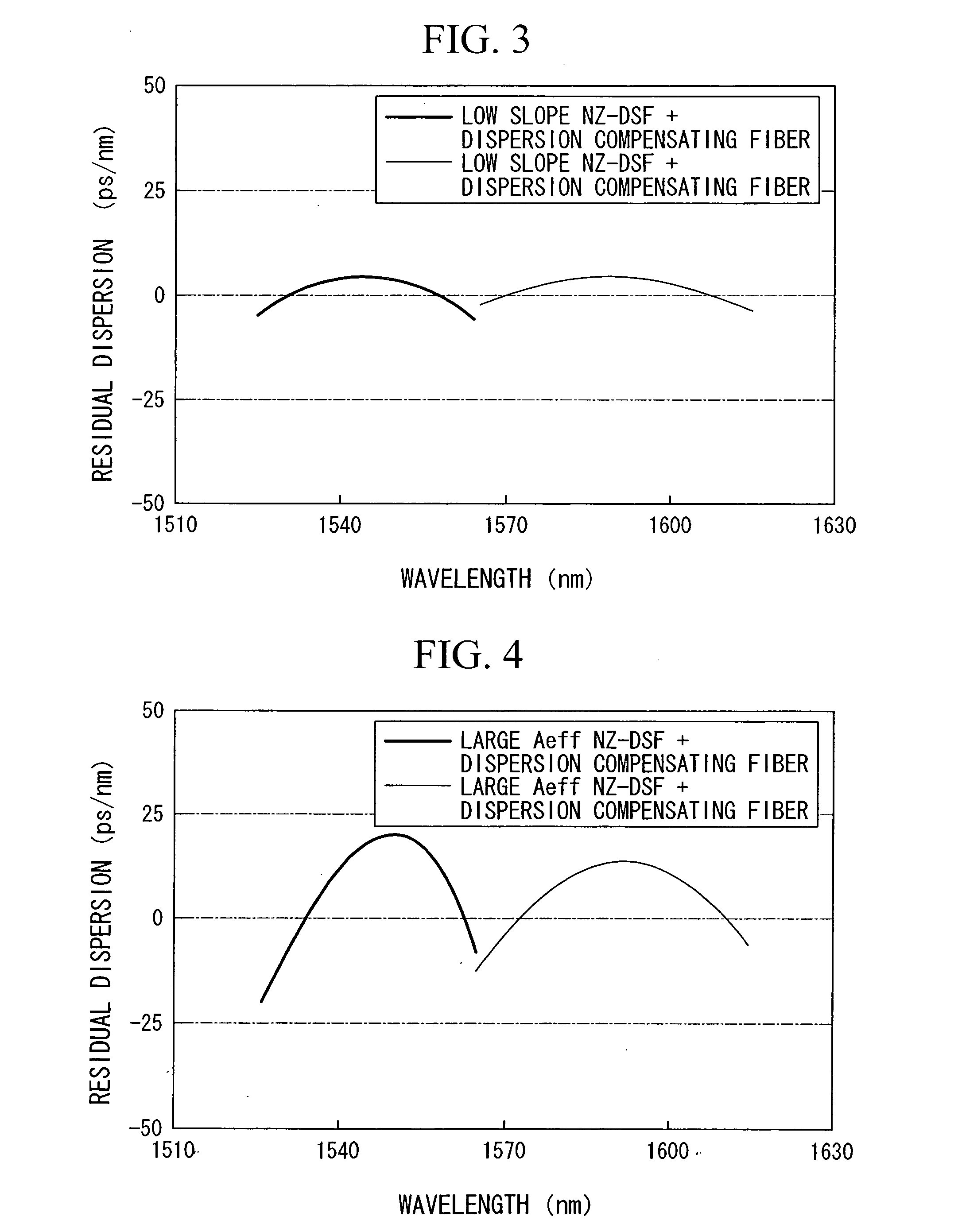Dispersion compensating fiber module, and optical fiber transmission line
a technology of fiber module and optical fiber, applied in the direction of cladded optical fibre, optical fiber with desired dispersion, instruments, etc., can solve the problems of easy deterioration of transmission quality, easy bending of dispersion curve, difficult design and fabrication, etc., to reduce the number of additional dispersion compensating units, increase the cost, and reduce the residual dispersion of connected optical fiber
- Summary
- Abstract
- Description
- Claims
- Application Information
AI Technical Summary
Benefits of technology
Problems solved by technology
Method used
Image
Examples
first exemplary embodiment
[0042] A first exemplary embodiment of the invention is a dispersion compensating fiber (SC-DCF) module. FIG. 12 is a schematic inner view illustrating the SC-DCF module of the first exemplary embodiment of the present invention. FIG. 13 is a cross-sectional view taken along line A-A′ in FIG. 12. The SC-DCF module 10 may include an SC-DCF 11, two single-mode fibers 12 (for example, a 1.3 μm zero dispersion single-mode fiber), a reel 15, and a casing 16. The SC-DCF 11 may be wound about the reel 15 (for example, an aluminum reel), and may be sandwiched between the single-mode fibers 12 via fused splicing portions 13. A connector 14 may be provided to an end of each of the single-mode fibers 12 for connecting SC-DCF module 10 to transmission optical fibers or the like. Optionally, adaptors may be provided and may be interposed between one of the connectors 14 and connectors of fibers that are to be connected to the module 10. The adaptors typically are connected to the casing 16. In t...
second exemplary embodiment
[0046] A second exemplary embodiment of the invention is an SC-DCF module that includes an SC-DCF that exhibits, at a wavelength of 1.55 μm, a chromatic dispersion and a dispersion slope of negative values, and an RDS of between 0.006 nm−1 and 0.016 nm−1; and an optical fiber which exhibits, at a wavelength of 1.55 μm, a chromatic dispersion and a dispersion slope of positive values, and an RDS of between 0.0028 nm−1 and 0.0036 nm−1.
[0047] This SC-DCF module provides similar advantageous effects, as the first exemplary embodiment described above.
third exemplary embodiment
[0048] A third exemplary embodiment of the invention is an SC-DCF module of the first exemplary or second exemplary embodiment described above, in which the total length of the fibers in the SC-DCF module per −100 ps / nm is less than or equal to 40 km.
[0049] Here, the total length of the fibers in the SC-DCF module per −100 ps / nm, LTotal, is defined by the following formulae:
DDCF×LDCF+DSMF×LSMF=−100 (ps / nm)
LTotal=LDCF+LSMF
where LDCF is the length of the SC-DCF (km), LSMF is the length of the S-SMF(km), DDCF is the chromatic dispersion of the SC-DCF (ps / nm / km), and DSMF is the chromatic dispersion of the S-SMF (ps / nm / km).
[0050] When the total length of the fibers per −100 ps / nm is greater than 40 km, the size of the casing for this SC-DCF module becomes greater than that of conventional ones, which is undesirable, since it entails increase of cost and the like. It is thus desirable for the total length of the fibers per −100 ps / nm to be less than or equal to 40 km, although it d...
PUM
 Login to View More
Login to View More Abstract
Description
Claims
Application Information
 Login to View More
Login to View More - R&D
- Intellectual Property
- Life Sciences
- Materials
- Tech Scout
- Unparalleled Data Quality
- Higher Quality Content
- 60% Fewer Hallucinations
Browse by: Latest US Patents, China's latest patents, Technical Efficacy Thesaurus, Application Domain, Technology Topic, Popular Technical Reports.
© 2025 PatSnap. All rights reserved.Legal|Privacy policy|Modern Slavery Act Transparency Statement|Sitemap|About US| Contact US: help@patsnap.com



